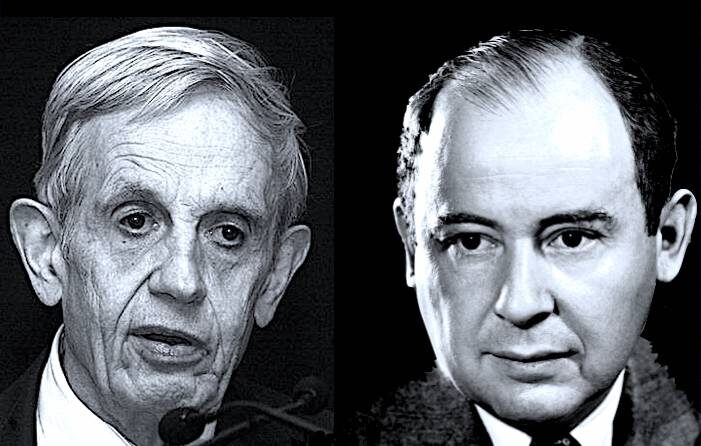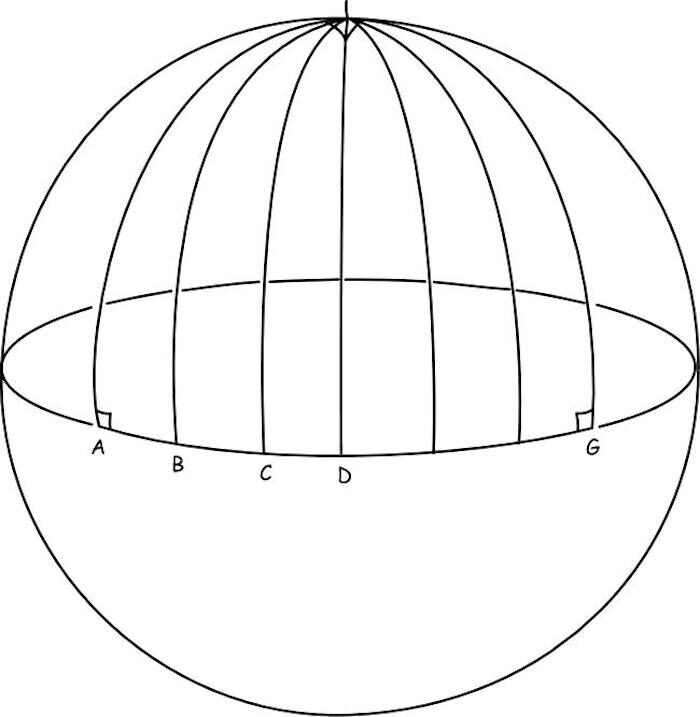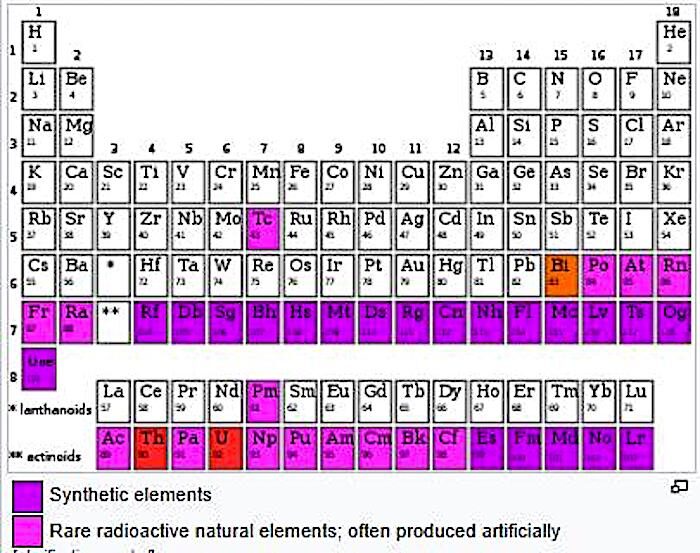The crux of the theory is that an individuals' behaviour will always be motivated towards achieving an optimal outcome, which is determined by self-interest. An assumption made is that the players in such a game are rational, which translates to, "will strive to maximize their payoffs in the game". In other words, it is assumed they are motivated by selfish self-interests.
Over the years, other contributors such as John Nash (Nash equilibrium) and John Maynard Smith (evolutionary stable strategy) have added to the theory and we are now at a point where it is considered by many to be an essential tool when modelling economic, political, sociological or military behaviours and outcomes, and is taught as such in many prestigious universities as something pretty much set in stone.
But what if we have made a terrible mistake?
After all, it is acknowledged by the theorists themselves that the entire functioning of their model relies upon the assumption that we are governed by rational selfish behaviour, and that they feel confident about this assumption since reality has apparently confirmed this fact to them. But what if this game is not objectively mirroring a truthful depiction of us? What if this game has rather, been used as a conditioning tool, a self-fulfilling prophecy, a positive feedback loop?
How can we know what is true? How can we know what kind of a person we truly are and not what we have been conditioned to think of ourselves as?
Theory of Games and Economic Behaviour
Before we can answer such a question, we need to look at the forms of simplification and assumptions that were used by von Neumann when formulating the philosophy to the game theory model. This may be counter-intuitive to some, but the "philosophy" or "hypothesis" must always precede the actual model. The variables you choose to use, the variables you discount for, how you define the variables, how you define the relationship between the variables are not being defined by the model, but rather the creator of the model. Once the model is created it can now, theoretically, add to that beginning structure and mimic a simplified version of reality.
However, we should keep in mind that a model that has been created on a false hypothesis could still "function," if the variables are not too much in contradiction to the other variables' operations. Such a model is not "aware" that it is not a representation of "reality," and cannot indicate so to its creator. Thus, a model can be a representation of a simplified reality or it can represent a completely artificial reality.
At the beginning of von Neumann's book, he goes through several disclaimers which are highly problematic towards the relevance of his theory, one of them being the acknowledgement that "there exists, at present, no satisfactory treatment of the question of rational behavior. There may, for example, exist several ways by which to reach the optimum position; they may depend upon the knowledge and understanding which the individual has and upon the paths of action open to them, because they imply, as must be evident, quantitative relationships."
As becomes rapidly evident, von Neumann makes endless assertions such as these, as if they were obvious and thus need not be examined at all. The assumption that an under-defined "rational" selfish behaviour is merely quantifiable and nothing more, and does not account for qualitative change (a mathematician's worst nightmare), is taking great liberty in over-simplifying human behaviour to conveniently fit the limited parameters of his model. In other words, it is cheating. You are manipulating the definitions and interactions of your variables to fit an artificial reality of your model.
Let me give you an example.
In Euclid's fifth postulate, it is considered a "rule" that two parallel lines will never intersect. Euclid was alive around the time of the mid-4th century BCE, before Eratosthenes (276-194 BCE) made his beautifully elegant discovery that the Earth was indeed curved and also made a pretty accurate first measurement of the size of Earth.
That is, Euclid assumed a linear geometric space upon which the real universe was expected to "fit". While it is true that two parallel lines will never meet on a two-dimensional plane, they can meet on a three-dimensional plane.
As is now understood, line A and line G, can be measured as 90 degrees from the equator line and thus are parallel lines, and yet they can eventually interface with each other if the surface is curved [see image].
The problem with assumptions such Euclid's is that they are ultimately only true in an artificial situation and are not reflective of how such things will interact in reality. Also, there is no way to predict from Euclid's fifth law, how two parallel lines would interact in a three dimensional space, let alone in n dimensional space as described by the physicist Bernard Riemann.
Ironically, in his book, von Neumann likens his "pioneering" work in the field of game theory to that of what physicists have been doing for centuries, that is, mathematical formulations that represent, albeit simplified, the "laws of nature," concerning matter and energy. However, von Neumann again showcases that he has no comprehension as to what constitutes the foundation for such "laws of nature."
In his Hypotheses that Lie at the Foundation of Geometry and other works, Riemann rigorously developed the notion of an anti-Euclidean physical space time shaped not by linear dimensions of an "x,y,z grid", but rather dimensions defined by an ever growing array of discovered physical principles such as magnetism, light, heat, gravity, sound, etc.- each organizing principle being ironically characterized by both a finiteness and unboundedness with quantized least-action pathways discoverable therein.
According to Euclid's logic, you never "see" two parallel lines intersecting and thus it is unfathomable that they ever could intersect. His "rule" was based off of shared assumptions of what we "think" we are observing in such phenomena, however, this is not necessarily reality and it certainly does not translate to a "rule" that governs all.
By von Neumann acknowledging that he himself is heavily relying on his so-called "self-evident" truths in simplifying human behaviour, he is asserting an outcome, he is not proving the outcome's natural occurrence.
The Robinson Crusoe example in Monetarist Economic Theory
According to von Neumann, the Robinson Crusoe example was used by the Austrian economic school to model an individual's behaviour towards maximizing pay-off in an environment (in this case an island) where the resources available to you are set and limited.
There are many problems with this, but the most unforgivable one is the assumption of a set, limited and unchanging reserve of resources available to the individual. In other words, the Austrian school of economy and von Neumann with them, consider Crusoe's deserted island as the perfect case study for a limited resource, zero-sum game scenario.
Ironically, this assertion is entirely missing the point of what actually occurs in Daniel Defoe's story of Robinson Crusoe, and causes one to wonder whether these theorists ever read the book or rather read a two line cliff's notes synopsis.
Henry C. Carey, Lincoln's economic advisor, would say in his book Unity of Law (1872):
"Crusoe having made a bow, had thus acquired wealth; that wealth exhibiting itself in the power obtained over certain natural properties of wood and muscular fibre, thereby enabling him to secure increased supplies of food with greatly diminished expenditure of labor. Having made a canoe, he found his wealth much increased, his new machine enabling him to obtain still further increase of food, and of the raw materials of clothing, at still decreased cost of personal effort. Erecting a pole on his canoe, he now commands the services of wind, and with each and every step in this direction finds himself advancing, with constantly accelerated rapidity, toward becoming master of nature, and a being of real wealth and power."Does that sound like the description of a "limited resource," "zero-sum game" scenario? In other words, where is the "set" limit? The limit is constantly being readjusted to what the individual creates which changes his/her relationship to the "utility" of the resource.
For example, the resource wood, depending on the individual's innovation can be used to keep one warm and dry, cook food, create weapons, create shelter, create a ship for travel etc. etc.
The existence of yet-to-be-created potential thus offsets the entire system of von Neumann because his system has no way of predicting potential, i.e. qualitative transformations, nor how it will affect behaviour.
If you cannot predict future qualitative change, which is ongoing, such as the discovery of electricity or the creation of man-made Plutonium and other transuranic elements, or the potential waiting to be unlocked by the very feasible fusion plasma torch that can turn landfills into resource mines, how can you assume a defined set limit or even a defined zero-sum game as a "self-evident" truth when you cannot even predict what is the limit?
The Supposed Paradox of "The Greatest Good for the Greatest Possible Number"
In von Neumann's book he refers to "the greatest good for the greatest possible number" as a contradiction, because according to von Neumann you cannot maximize two or more functions at once, that in a social economy, all maxima are desired at once by various players.
That is, there is no concept that it is possible to cooperate and share an optimal outcome, without it coming out of "your" share so to speak, that comes at a cost of having less instead of more. This is a very basic understanding of economy, and again does not account for how cooperation and creative potential can work to transform the "goods" of an outcome.
For instance, country A is militarily stronger than country B, which is rich in many raw resources. Country A is also stronger politically than country B in that, there are no other countries that will likely intervene against country A's actions if it chooses to invade country B. What course of action will yield the greatest return to country A?
Well, there is a very obvious answer to that question; however, contrary to popular thought it will not yield the greatest optimal outcome. The greatest optimal outcome is rather to cooperate.
It is in both country A and country B's best interest to share knowledge, even if country A has much more knowledge, such that country B develops the capability to refine its raw resources. By doing so, country B will yield a greater return in trade over the long-term to country A, and country A does not have to worry about a future retaliation from country B. By developing a more advanced economy the wealth of trade is increased for both countries. By cooperation, the optimal outcome is transformed and offers a greater return.
This is exactly the model that is being used by China presently in their philosophy of "win-win cooperation," and it has proven itself most effective despite all attempts to villainize it as something nefarious. Rather than fight over resources, there is a cooperation to share technology, increase resource yield and share a greater boon than originally existed.
John von Neumann goes on to state in his book, that the more players in the model, the easier it is to predict the outcome, since the use of statistics and probability are increasingly better indicators of behaviour and performance. As he states:
"When the number of participants becomes really great, some hope emerges that the influence of every particular participant will become negligible and that the above difficulties may recede and a more conventional theory become possible. These are, of course, the classical conditions of 'free competition'."He goes on to use the example of our solar system, with its nine major bodies, as being much harder to model than 10^25 freely moving gas particles, as per gas theory, simply due to the sheer number of objects you are dealing with.
This is truly a remarkably absurd statement, where von Neumann is asserting that if the solar system had more major bodies orbiting within it, it would thus be easier to model based off of probability.
Every planet in our solar system is a different size and weight, with a different number of moons. Every planet revolves around the sun in imperfect elliptical orbits that change slowly overtime, the planets travel along these orbits in a non-uniform way that is observable through planetary retrograde motions. The fact is that our solar system is not some perfectly closed system that is uniform and consistent in its actions, there are cyclical changes but there are also non-cyclical changes that are occurring. This is due to our solar system orbiting around a galactic center of the Milky Way which is itself moving in yet-to-be discovered ways within a larger cluster of galaxies.Therefore, you cannot use any theory of probability because the system is in a state of ongoing non-linear change. The more bodies you add to such a system the more complex it becomes, not the more negligible.
For example, there exists no straightforward formula to identify all prime numbers, though there are an infinite number of prime numbers. Prime numbers are a reflection of a non-linear process of change.
Such an oversimplification of nature shows the audacity behind the assumptions that make up such formulations like game theory. You are nothing more than a virtual avatar in their synthetic world with programmed limits to what you can and cannot do in the game they have created for you.
Game theory does not represent the motivations behind human nature, but rather imposes such limitations since, as they acknowledge themselves, it is easier to predict and control your chosen selfish behaviours which are encouraged and rewarded with "incentives."
It is a system of enslavement that encourages its slaves to fight each other for "table scraps" and never question the hand that withholds, the system that creates false scarcity and promotes antagonism over artificial stressors.
We are taught never to question the rules given to us in these game theory scenarios, but to react accordingly to what has been defined to us as a limited set of options in an artificial scenario.
Perhaps the best indicator to this is, ironically, the very creator of the prisoner's dilemma, John Nash. Nash had won the Nobel Prize for Economics in 1994 for his "landmark" work beginning in the 1950s on game theory. Although it is not clear whether he was suffering with paranoid schizophrenia when he developed the Nash Equilibrium, starting in 1959, Nash would go in and out of mental hospitals for over nine years.
In 2007, he was interviewed while still working at Princeton. Here is his very unselfish offering of his "enlightenment" (his words) on game theory after over 50 years of work in the field. Keep in mind he is using the definition of rational behaviour according to game theory, which is defined as a selfish self-interest:
"I have had some trouble myself on the psychological level; I've been in mental hospitals...I realise that what I had said at some time may have overemphasized rationality...And I don't want to overemphasize rational thinking on the part of humans...Human beings are much more complicated, the human being as a businessman....Human behaviour is not entirely motivated by self-interest of each human...game theory works in terms of self-interest, but...some game theory concepts could be unsound. There is over-dependence on rationality. That is my enlightenment."
About the Author:
Cynthia Chung is a lecturer, writer and co-founder and editor of the Rising Tide Foundation (Montreal, Canada).






So, naturally and unsurprisingly, his theory reflects a psychopathic mindset.